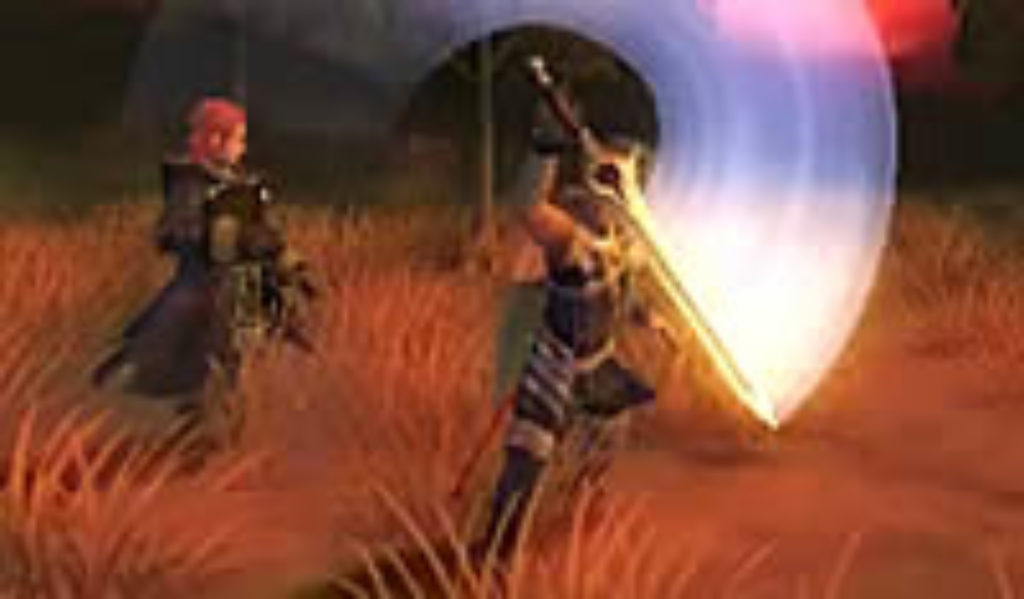
While playing Nintendo’s new 3DS game Fire Emblem: Awakening, I couldn’t help but harken back to another turn-based strategy RPG that came out some 20 years ago. It was a 16-bit SEGA game called Shining Force. And it was one of the first I’d played that combined different character classes, weapon choices and involving personalities in a fantasy world chock full of pop-up, grid-based battles.
This new handheld game mixes those time-tested classic constructs with enough story and character updates to keep things engaging, even for a new generation of gamers. It’s about border conflicts and political intrigues in a fantastical land. It asks questions about difficult choices, heroism, self-sacrifice and the wisdom of war or diplomacy.
It’s also a tale with a few T-rated troubles hidden away in its battling layers.
What the Shepherds Saw
It all starts out pretty simply: A group of soldiers called the Shepherds are traveling the land, protecting their kingdom of Ylisse from incursions from the nearby enemy realm of Plegia. They’ve also been picking off groups of dark creatures called Risen that have recently been mysteriously popping up. Not that mysterious means unusual, mind you, not in a fantasy world well used to magic and mayhem. But then those simple beginnings become more complicated.
The Shepherds soon come upon … you. You’re a guy who wakes up in the middle of nowhere with no memory of who you are or where you came from. But it just so happens that you possess some pretty valuable tactical skills, and so the Shepherds take you in. Who shows up next? A warrior named Marth who says he’s from the future—a future where humankind is all but extinct and a massive evil has overtaken everything.
Yep, that ill-begotten fate has something to do with you.
So are you a force for good, evil, or both? Only many, many battles and 20-plus chapters of twisting story will tell for sure. But I’m going for good. Which means that on the way to that conclusion—which involves facing near-impossible odds against a gigantic mega-powerful dragon and its hundreds of slavish monster and human followers—it’s your job to get your squad of heroes in shape.
Rock, Paper, Scissors
Battles all center around a grid-based map on which you plot out the bird’s-eye movements and attack formations of your tiny characters against scores of equally tiny attackers. As you progress and gain new recruits, the game helps you see that there are many strategic qualifiers that must be taken into account. There are, for instance, 44 different classes into which you can choose to upgrade your characters. Add that to a variety of sword, lance, ax and bow weaponry (and magic attacks), and you’ve got a rock-paper-scissors battle formula to explore in each individual conflict.
A knight with an iron lance, for instance, will have an advantage over a villain with a bronze sword. Magic blasts will crumple a heavily armored general. And an archer will gain a boost against airborne battlers. Map terrain is part of the equation too. So a bird-riding Falcon Knight will skim across desert landscapes and have a big advantage over a regular horse-bound rider who gets bogged down in a sand drift. Another interesting part of your battling consideration is how well your characters interact with one another. Each individual here has his or her own tale to tell. And if the right characters are paired together, they start getting used to each other, gaining proximity boosts as their relationships grow.
They’ll share their stories and their stat bonuses with their buds. They’ll toss in an extra blow to help out a pal and even step up to shield a valued compatriot from an opponent’s strike. In a few cases the male/female friendships can even blossom into love, and the resulting kids can grow into knighthood and contribute family bonuses. It’s a fun construct that adds a whole new level of statistical management to your customizing and battle-planning strategies.
A Couple of Problems and Many, Many Gods
Just how deadly are those battles, you ask? At the point of contact, the bird’s-eye view camera swoops down to ground level to show the sword-clashing conflict in a cartoony animated movie form. As the arrows or lances fly, characters succumb by puffing out of existence with little flashes of light. No blood or mess. Players also have the choice of determining whether or not the defeats will be permanent. On the softer settings, a fallen fighter will simply keel over, apologize for his failings, and let you know that he’s absorbed one too many blows or magic blasts and needs to go back to the barracks for a bit of rest.
A few language blasts can be a part of the battle, with exclamations of “d‑‑n!” and “go to h‑‑‑!” peppering the proceedings. And we hear a plural form of what is typically an abuse of God’s name: “godsd‑‑mit.”
That last bit of insult also points out a polytheistic vibe that gamers and parents ought to be aware of. One character uses the catchphrase “Pick a god and pray” before landing his most powerful blow. And while the game doesn’t discuss or elaborate on its theological underpinnings, such spiritual substitutes certainly are part and parcel of this magicking world. So it would seem that in this case at least, with many clever character classes come many god classes too.

After spending more than two decades touring, directing, writing and producing for Christian theater and radio (most recently for Adventures in Odyssey, which he still contributes to), Bob joined the Plugged In staff to help us focus more heavily on video games. He is also one of our primary movie reviewers.